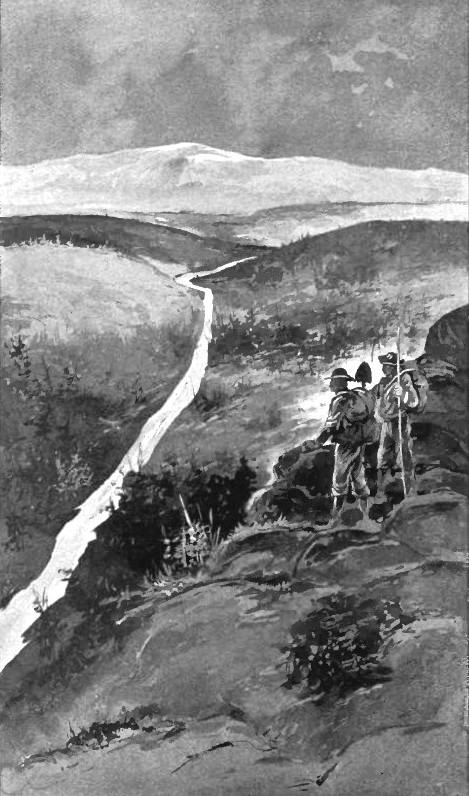In the U.S.A. the
districts chiefly concerned in the, production of zinc ore are Franklin in
New Jersey, and various districts in the States of Missouri, Colorado, and
Wisconsin. At Franklin, New Jersey, the ore-body occurs in pre-Cambrian
crystalline
limestones. It has the appearance of a bedded deposit, and is
regarded by some .authorities as having been formed contemporaneously with
the limestone. Others regard it as an impregnation formed subsequently to
the limestone, and hold the view that its origin is connected with the
granitic intrusions which traverse the beds. The ore minerals are of a
singular type, and consist chiefly of franklinite, willemite, and zincite.
The average composition of the ore is stated to be as follows: franklinite,
about 52 percent, willemite 31%,
calcite 12%, zincite 4%, and other silicates about 3 percent.
The occurrences in Missouri and Colorado are locations where
sphalerite is associated with
galena and various other minerals. In south-western Wisconsin
zinc ore occurs in an Ordovician limestone which is known as the "galena
limestone." The ore-body consists of disseminations in the limestone. The
ore minerals are sphalerite and smithsonite associated with galena,
pyrite, and calcite. The percentage of zinc in the United
States zinc-ore concentrates is variable, being less for the carbonate than
for the sulphide ores, but the concentrated ores as a whole for the United
States are stated to average about 49 per cent, of zinc.
Joplin Region. The Joplin region, which is mainly in southwestern
Missouri, extends into neighboring portions of Kansas and Oklahoma. The
deposits have been known since 1850, and the mines have produced over
1,000,000 tons of lead concentrates and 6,000,000 tons of zinc concentrates.
The ore in general is of low grade, and enormous tonnages are treated,
especially of ore from the "sheet ground." Considering the nature of the
deposits the low cost of mining in this region is noteworthy. All the rocks
of the region are sedimentary. They dip south-westward at very low angles
away from the Ozark uplift. The surface is a rolling prairie. Carboniferous
rocks only are exposed. These are for the most part Mississippian, but here
and there small remnants of Pennsylvanian rocks are found.
The principal ore minerals
are sphalerite and galena and their oxidation products. A little cadmium is
present, but practically no silver. The ore is believed to have been
deposited by cold underground water. The beds dip at low angles from the
Ozark uplift, and Siebenthal regards the solutions that deposited the ore as
circulating at considerable depth under artesian conditions. On the other
hand, Buehler and his associates of the Missouri Geological Survey believe
that the metalliferous waters moved downward.
Wisconsin Region. In the upper Mississippi Valley, in southwestern
Wisconsin, northwestern Illinois, and northeastern Iowa, are numerous
deposits of zinc and lead. 1 The rocks of this area are limestone,
sandstone, and shale. They dip very gently to the southwest,
and in places there are small shallow synclines. The rocks are fissured and
heavily jointed, but there are no great faults in the region. Outcrops of
igneous rocks likewise are lacking. The ores are principally in the Galena
limestone, though some are in the Platteville limestone and some in the
Maquoketa shale. Most of the workable deposits are near the base of the
Galena, though some are in the upper part. The shale or clay seam is at the
top of the Platteville. The oil rock is an impure shaly limestone rich in
organic matter, which consists chiefly of microscopic algae. The ore
deposits are in "crevices," in "runs," disseminated in beds, and in "flats
and pitches." Certain beds appear to be especially favorable to
concentration of the ore, and where these are cut by crevices, flat-lying
irregular ribbons of ore are developed at and near the intersections. Such
ore bodies are termed "runs." The ore in the "flats" follows the flat beds,
and the ore in the "pitches" follows crevices that pitch or dip away about
45 from either side of the vertical crevices. The pitches in a deposit join
at the end, making in plan a long, slender ellipse where they intersect the
oil rock. The form of the whole body has been compared by Chamberlin to the
domestic flatiron. As shown by Grant, this is a very common structural type,
and frequently the interior of the ellipse is filled with low-grade
disseminated ore, so that long, relatively narrow masses are worked.
Deposits that are largely workable are commonly as much as 1,000 feet long,
75 feet wide, and 40 or 50 feet high. The genesis of these deposits, as
stated by Chamberlin, Grant, and Bain, is essentially as follows: The lead,
zinc, and iron were originally deposited on the sea bottom at the time the
Galena
dolomite was laid down. The metals were probably in solution
as sulphates and chlorides and were reduced by organic matter to sulphides
at the time of their deposition. Later, when the beds, containing small
amounts of metals, were elevated and the Maquoketa shale was removed, a more
active circulation was established. The ores are composed of sphalerite,
galena, marcasite, and calcite. As shown by Grant, the deposits are in
shallow synclines. The oil rock is believed to have been thicker in gentle
depressions in the ocean floor. As a result of the loss of hydrocarbon gases
the oil rock shrank, and as a result of shrinking the overlying beds settled
and were fractured, forming the fissures for flats and pitches. The
solutions which had dissolved zinc and lead from surrounding beds entered
the cracks and deposited the metals, precipitation being probably aided by
gases escaping from the oil rock. According to Grant, the metals originally
were in the Galena dolomite, but Cox believes that they were derived in part
from the Maquoketa shale.
Eastern Tennessee. In eastern Tennessee zinc deposits are found at many
places, but the larger deposits are between Knoxville and Morrison. The ore
occurs as sphalerite and oxidation products and is found principally in the
Knox dolomite. The zinc is of unusual purity and commands a premium in the
market. The ore contains little pyrite, and oxidation has extended only to
shallow depths.
Franklin Furnace, New
Jersey. The Franklin Furnace district is in Sussex County, New Jersey,
about 50 miles northwest of Jersey City. Although discovered as early as
1650, the deposits were not actively exploited until 1860. The larger part
of the ore is concentrated, partly by magnetic processes, but a considerable
amount is smelted directly. The residuum obtained from smelting some of the
zinc ores carries 12 per cent, of manganese and 40 per cent, of iron. Much
of this material is utilized for the manufacture of spiegeleisen, a product
added to iron in making high-grade steel. The rocks of the Franklin Furnace
area are pre-Cambrian
gneiss and limestone and Cambrian limestone and
quartzite. The ore deposits are in the southwest end of a
band of limestone that extends northeastward 22 miles into Orange County,
New York. Both limestone and gneiss are bounded by later Cambrian sediments.
The main deposits are at Mine Hill and at Sterling Hill, about 2 miles
apart. Both are spoon shaped, or synclinal, and pitch about 20 NE. The ore
layer is from 1 to 100 feet thick, and the total length of the "keel" of the
syncline at Mine Hill is 3,500 feet. The Sterling Hill deposit is a great
mass of low-grade zinc-bearing material 250 feet wide. The ore minerals are
unusual species: franklinite constitutes 50 per cent, of the ore, willemite
20 to 30 per cent., and zincite about 4 per cent. Other minerals are
calcite, tephroite, zinc pyroxene, zinc spinel, zinc
garnet, and axinite. Still other minerals, including sphalerite,
have been deposited locally, especially near
pegmatite veins that cross the ore bodies here and there. The
zinc deposits grade into limestone and doubtless were formed by replacement
of limestone.
Butte, Montana. The Butte district is one of the largest producers of
zinc in the United States a distinction only recently achieved. It is an
area of
quartz monzonite crossed by several fracture systems, two of
which are heavily mineralized. The oldest or easterly system of fractures
includes the principal
copper ore lodes, among them the Anaconda and Bell-Speculator
vein systems. Of similar age and trend is the Rainbow lode, which lies only
a few hundred feet north of the Bell-Speculator group. This lode, which
received its name from its crescent shaped outline, is the largest and most
productive silver lode of the district. It is made up of many closely spaced
anastomosing veins of the replacement type. These crop out boldly and are
heavily stained with iron and manganese. The upper portions have been worked
successfully for
silver ore. The most valuable silver deposits were found in
the Alice mine, in which silver decreased with increasing depth and
sphalerite appeared in great quantities around the 1,000-foot level. On the
east end of the Rainbow lode, for about 2,000 feet along its strike, great
zinc deposits have been developed in the Elm Orlu and Black Rock mines. In
their upper levels both these mines were worked for silver. Zinc appeared in
quantity at depths between 400 and 700 feet below the surface. Huge deposits
are developed to the bottoms of these mines, which are opened to depths of
about 1,700 to 1,900 feet below the surface. The deposits are replacement
veins and fractured zones, locally over 100 feet wide. Most of the zinc ore
comes from the Rainbow lode, which lies north of the copper deposits. The
deposits are replacement veins and fractured zones, locally over 100 feet
wide. The minerals include sphalerite, pyrite, galena,
rhodochrosite,
rhodonite, and quartz. Appreciable quantities of silver are
present.
Chalcopyrite,
bornite,
chalcocite, and other copper sulphides typical of the copper
veins are found locally in the zinc deposits. Like the copper deposits of
the Butte district, the zinc deposits appear to have been formed at
intermediate depths by deposition from ascending hot waters genetically
related to igneous activities. A noteworthy feature of these deposits is the
absence of carbonates and silicate of zinc in the zone of oxidation. This is
probably due to thorough leaching by sulphuric acid generated by the
oxidation of abundant pyrite.
Coeur d'Alene District, Idaho. The Coeur d'Alene region of Idaho has for
many years produced considerable zinc as a byproduct of the concentration of
lead ore, and recently some of the mines have encountered in depth large
bodies of zinc ore. The Interstate-Callahan mine, one of the most productive
zinc mines in the United States, is about 7 miles northeast of Wallace. The
rocks of the area are pre-Cambrian quartzite and slate cut by monzonite and
related igneous intrusives. The ore deposits are veins. The ore minerals are
sphalerite, galena, pyritc, and quartz. Little or no
siderite is present. Considerable silver ore is contained in
the galena concentrate.
Return
to Metal Ores Page:
Precious and Base Metal Ores


